Ishikawa Diagram Professional Business Diagrams
:max_bytes(150000):strip_icc()/IshikawaDiagram2-386e9108096f4149b67cb5a803c45dd0.png)
Ishikawa Diagram What It Is, Common Uses, and How To Make One
A new model of Ishikawa diagram for quality assessment CC BY 3.0 Authors: Liliana Luca Constantin Brâncusi University The paper presents the results of a study concerning the use of the.

Ishikawa diagram on the example of the quality of production of bakery... Download Scientific
Ishikawa Diagrams, also known as fishbone diagrams or cause-and-effect diagrams, are a visual tool that can help identify the root causes of a problem. As a result, they are an ideal solution for businesses looking to improve their processes and reduce errors. We'll look at how Ishikawa Diagrams can be used to solve business problems in this post.
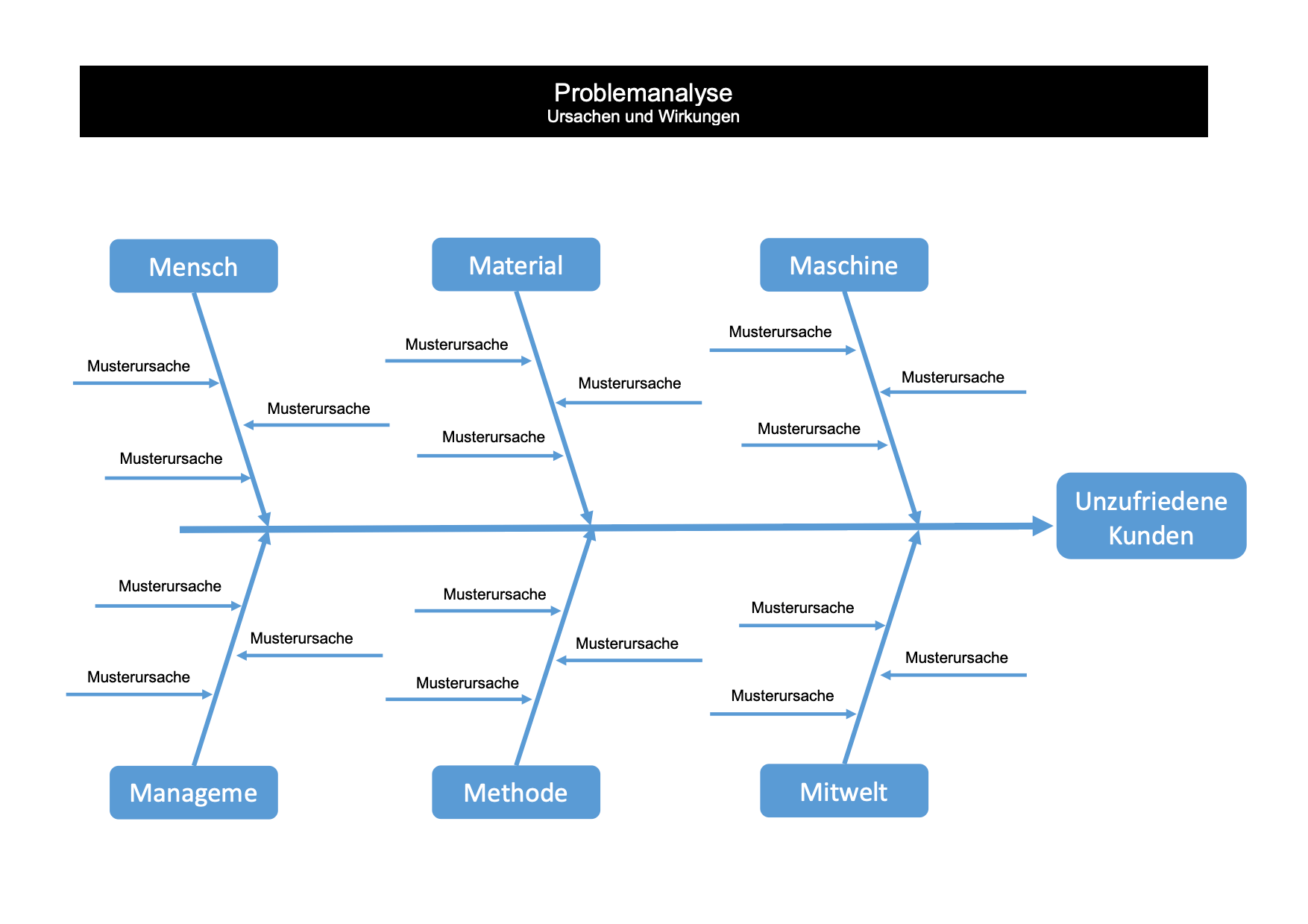
Ishikawa diagram template hmname
An Ishikawa diagram, also known as a fishbone diagram or cause-and-effect diagram, is a visual representation used to analyze and display the potential causes of a specific problem or effect. This diagram is named after Professor Kaoru Ishikawa, a Japanese quality control statistician, who popularized its use in the 1960s.

Ishikawadiagram Managementmodellensite
What is an Ishikawa diagram? An Ishikawa diagram is designed to show the potential causes of a specific event or process. It is commonly used in product development to brainstorm and outline the different steps within a given process, allocate resources, and determine whether quality control issues are likely to arise.
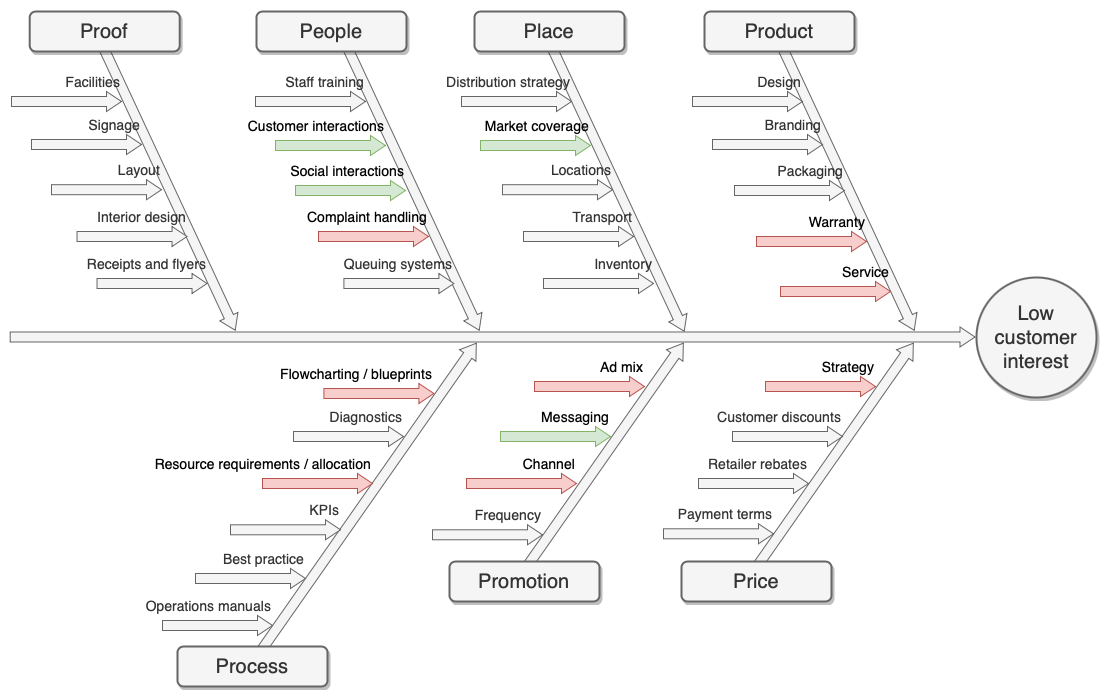
Blog Ishikawa diagrams for root cause analyses
Ishikawa diagram, also called the Fishbone diagram, is a tool used to identify problems in a system. It shows how causes and effects are linked and helps analyze what is going wrong with systems, processes, and products. The name comes from Japanese engineer Kaoru Ishikawa who developed the method in the 1960s.
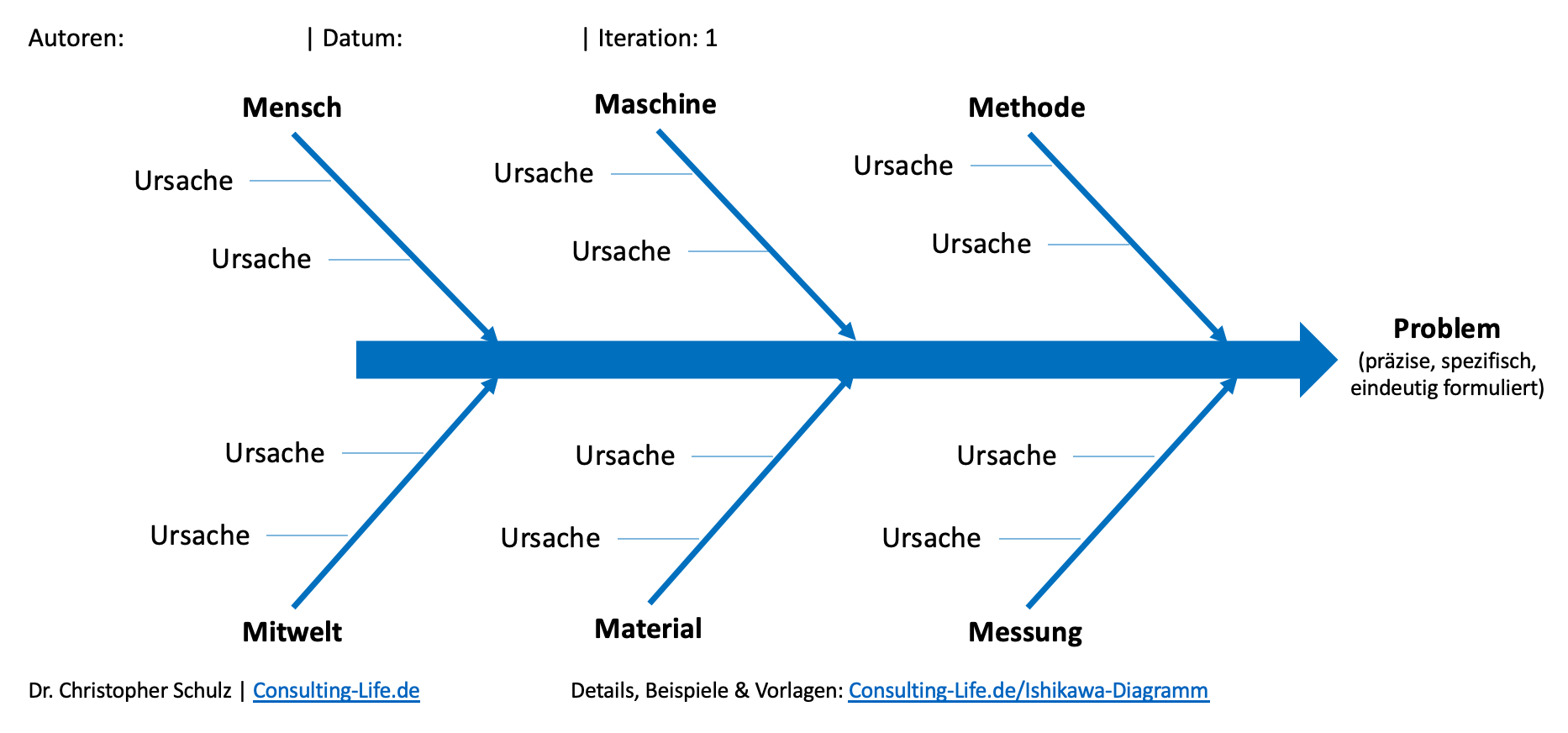
Ishikawa Diagramm Einsatz & Vorlagen ConsultingLIFE.de
Hence, the Ishikawa diagram (Fig. 9.6) is a "living" diagram that can be continually updated to reflect ongoing research findings. Simon has progressed well in cognitive behavioural therapy. He is more cheerful and well aware of the value of life and he believes that suicidal behaviour is silly because that behaviour will hurt his family and loved ones, and death does not solve any problem.
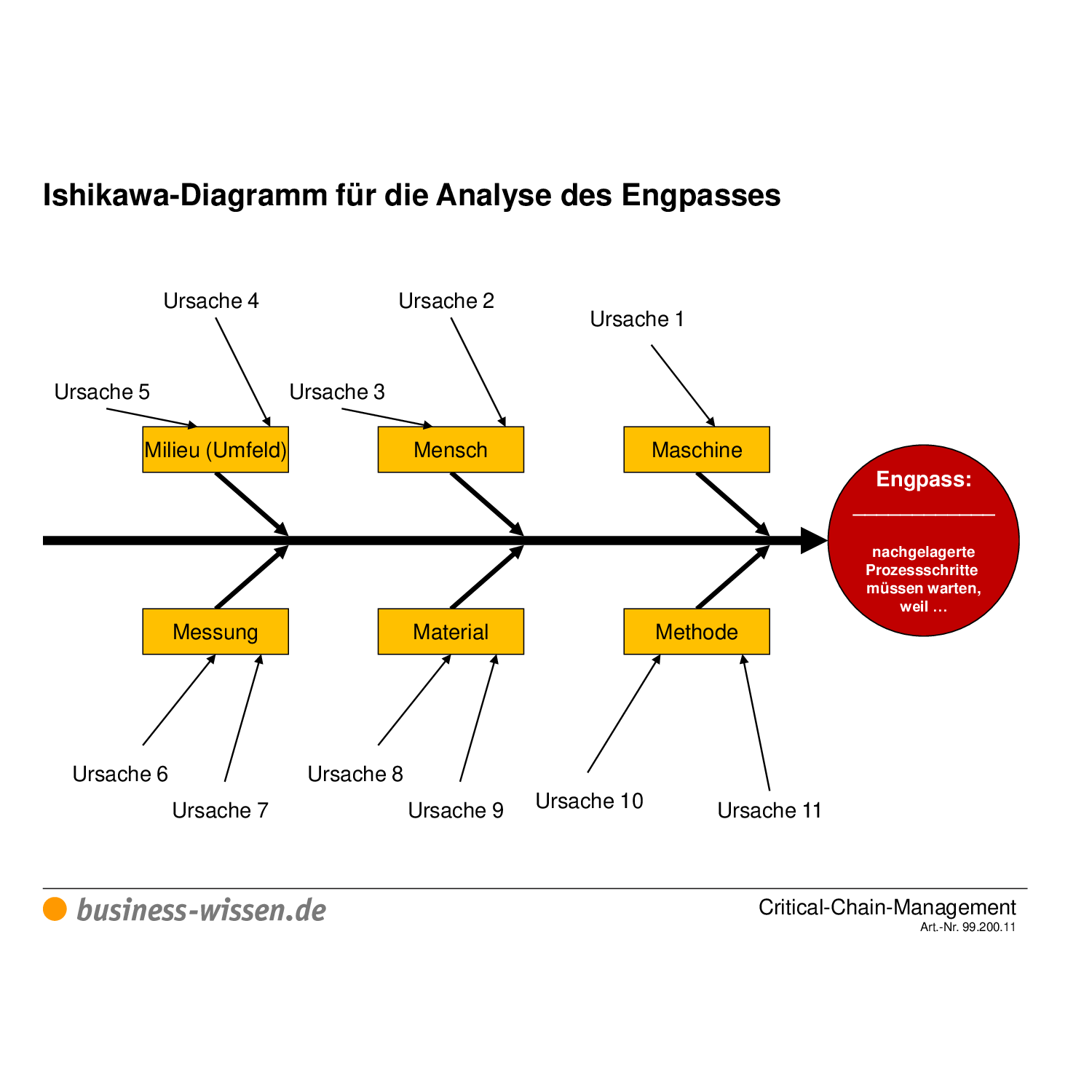
Ishikawa Methode
An Ishikawa diagram is a diagram that shows the causes of an event and is often used in manufacturing and product development to outline the different steps in a process, demonstrate where.
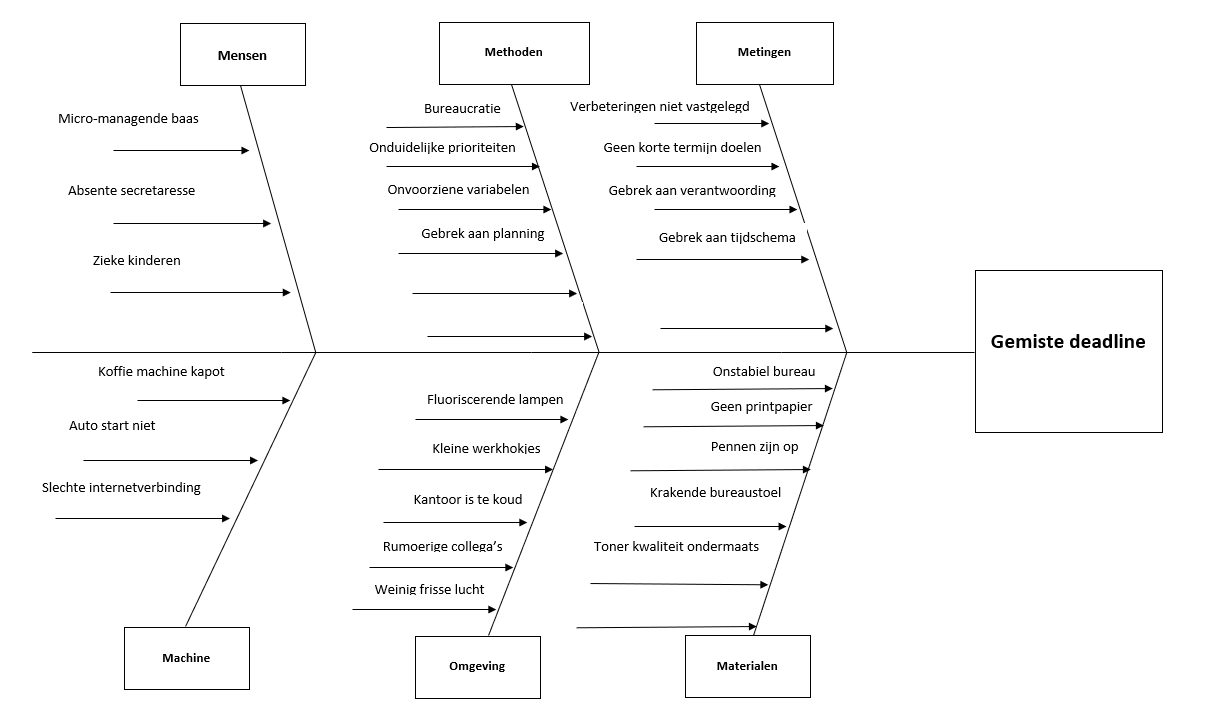
Ishikawa Diagram Lean Six Sigma Groep
To create an Ishikawa diagram in Lucidchart, click this pre-made template and edit it to suit your purposes. This marketing-oriented chart shows potential causes of low website traffic. The spine and branches of the diagram are made of straight lines—to add more, press L and drag your mouse. To edit the text, double-click it and begin typing.
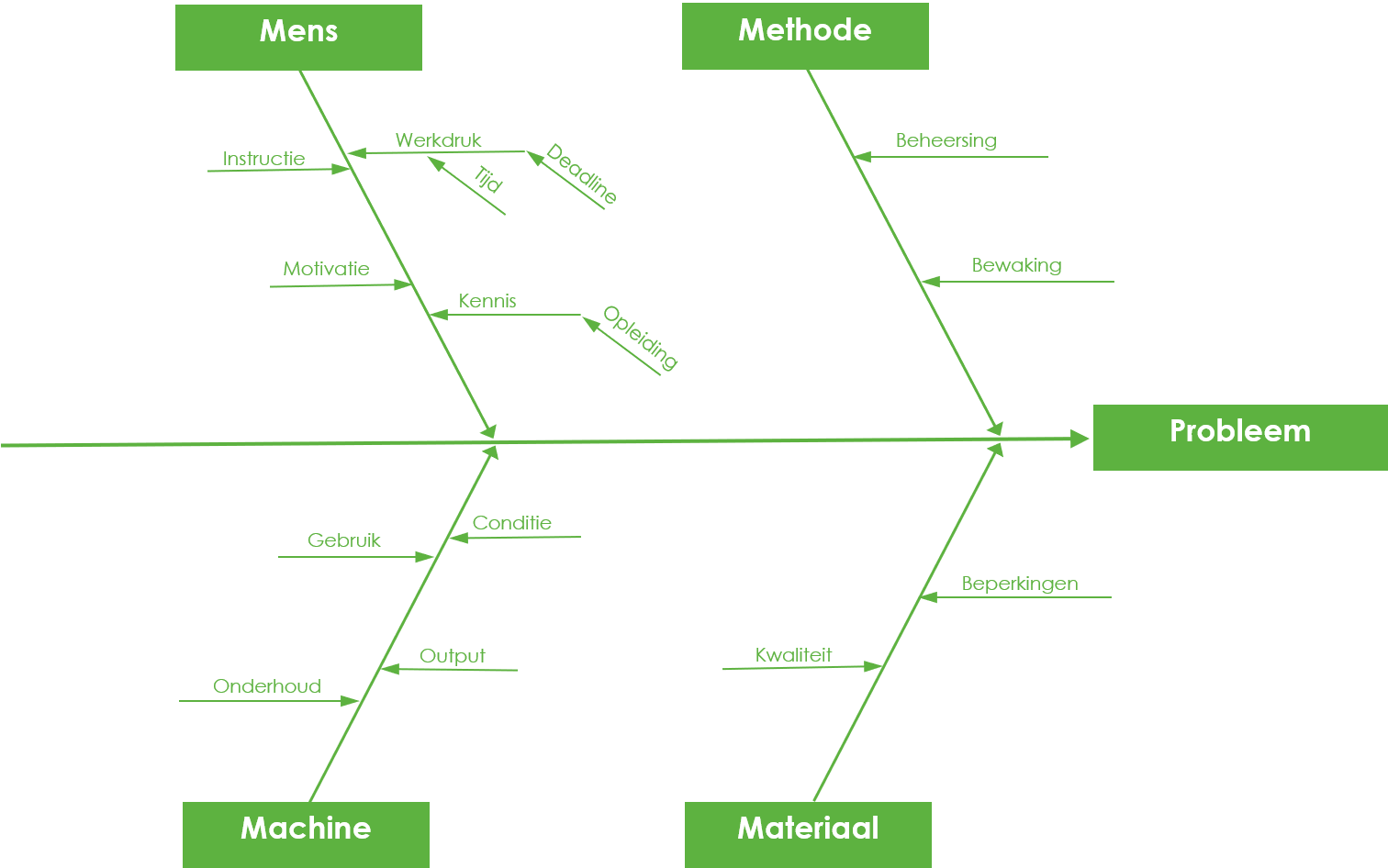
Visgraatdiagram (Ishikawa) Identificeer bronoorzaken en oplossingen LeanInfo.nl
Evaluatie: De kernoorzaak welke voortkomt uit het diagram; Voorbeeld visgraatdiagram. In het voorbeeld worden de oorzaken van het probleem geïdentificeerd. Een bedrijf heeft problemen met een toename van lekkende producten. Middels het visgraatdiagram zijn de (hoofd-)oorzaken in kaart gebracht. Toebehorend aan het diagram wordt een toelichting.
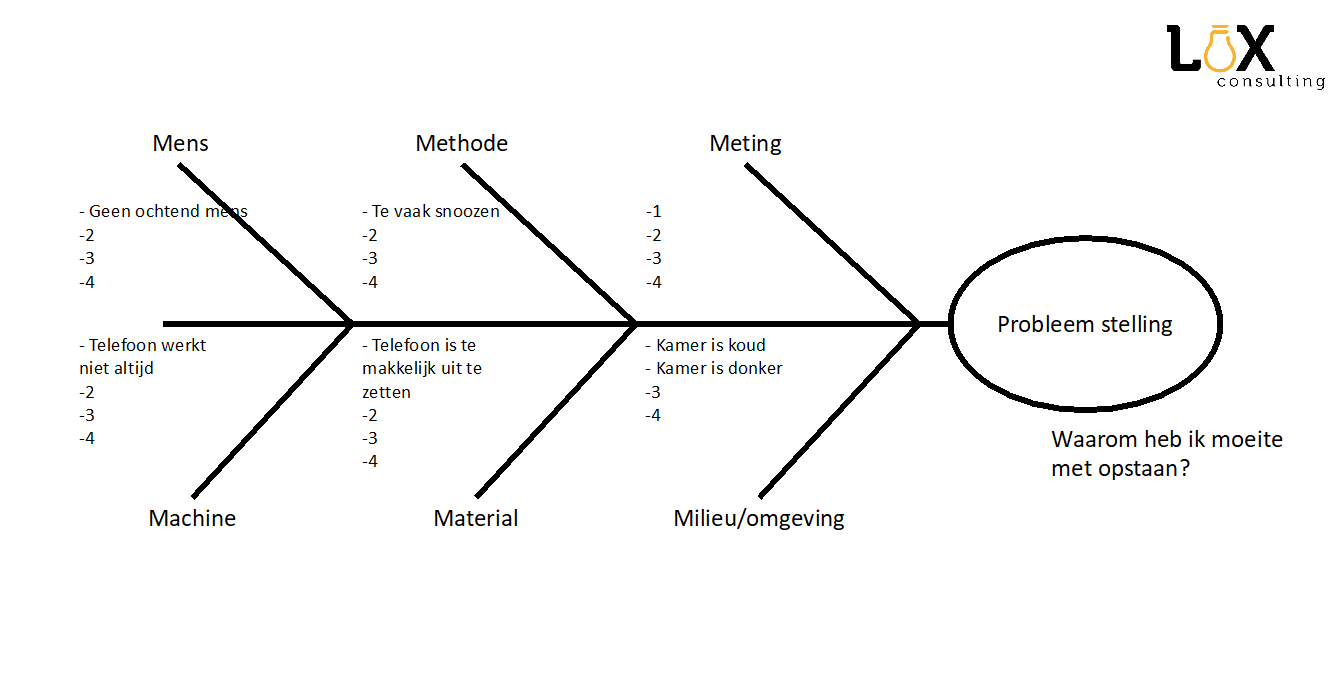
Ishikawa diagram Lux Consulting
How to build an Ishikawa diagram in 5 steps. Step 1: Find the problem statement. Step 2: Brainstorm to think of the main causes of the problem. Step 3: Sort these causes into categories. Step 4: Identify the branches that have the most impact. Step 5: Draw the Ishikawa diagram. Example: free fishbone diagram template.

Ishikawa Diagram Untools
Hoe maak je een Ishikiwa diagram? De methode volgt vier stappen. Als eerste moet er overeenstemming zijn over de probleemdefinitie (Effect). Dit statement wordt opgeschreven aan de rechterkant van een flipchart of white board. In de volgende stap (2) wordt de basis van het diagram opgezet (de ruggengraat).

Visgraat diagram (Ishikawa) projectmanagementsite
Een Ishikawa-diagram, ook wel visgraatdiagram of oorzaak-en-gevolgdiagram genoemd, is een visuele weergave die wordt gebruikt om de mogelijke oorzaken van een specifiek probleem of effect te analyseren en weer te geven.
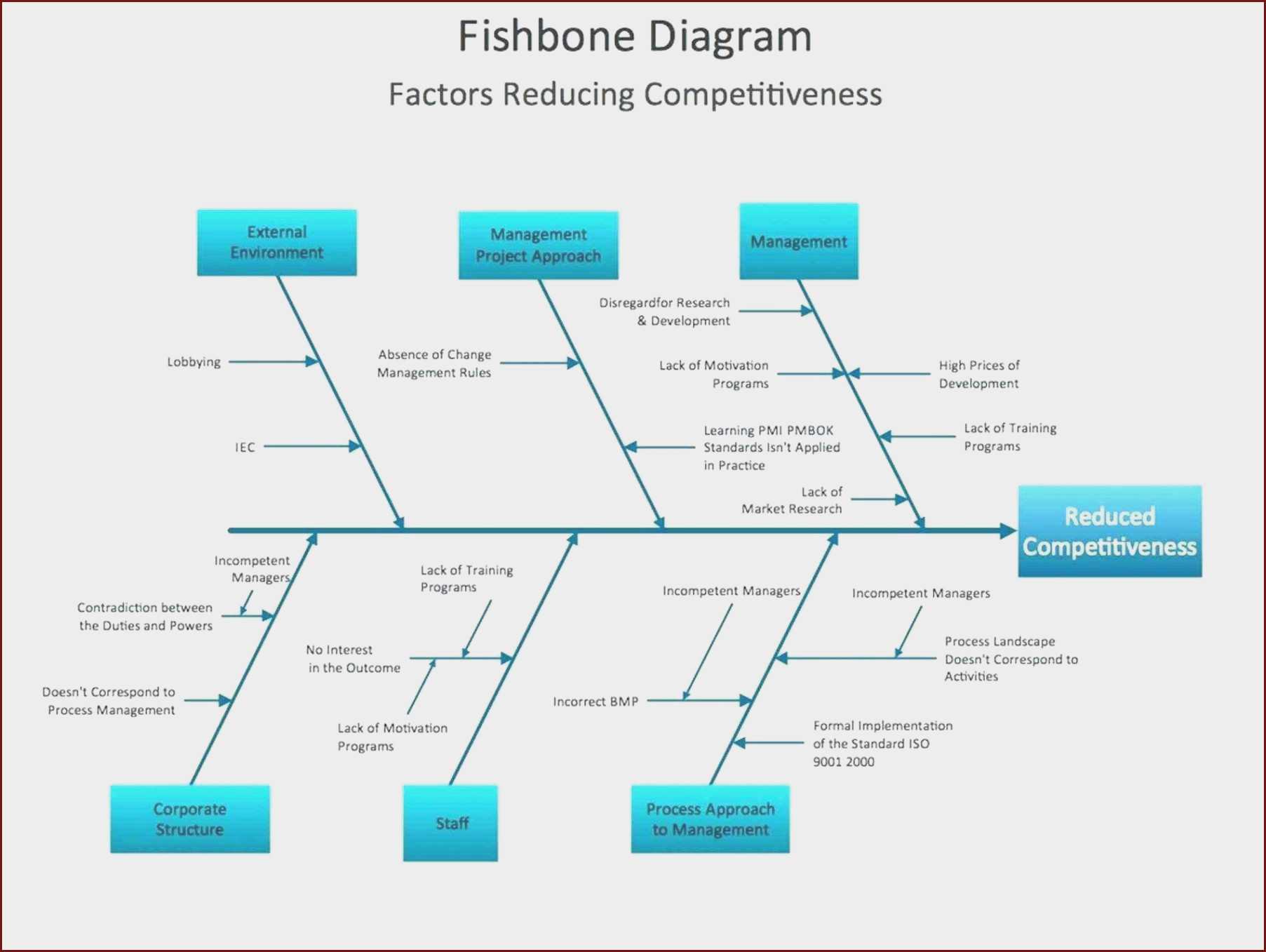
Ishikawa Diagram Template Word
Make a diagram 99% of the Fortune 500 trust Lucidchart to keep teams on the same page. Get started with ishikawa diagram templates To create a ishikawa diagram in Lucidchart, click this pre-made template and edit it to suit your purposes. To edit the text, double-click it and begin typing.

Ishikawa Diagram Template for Marketing. You can edit this template and create your own diagram
Ishikawa Diagram Hoe maak je Lean praktisch met een Ishikawa- of visgraatdiagram? De term 'praktisch' kent een paar synoniemen, zoals 'efficiënt', 'handig', 'toegepast' en 'bruikbaar'. Lean is gelukkig ook lekker praktisch, oftewel, je kunt ermee in de praktijk uit de voeten. Je kunt Lean toepassen op veel situaties, zowel op je werk als thuis.

Ishikawa Diagram Professional Business Diagrams
Ishikawa diagrams, also known as Fishbone diagrams or Cause-and-effect diagrams, are essential tools in the world of quality management and problem-solving. Developed by Dr. Kaoru Ishikawa in the 1960s, these diagrams provide a visual representation of factors contributing to a specific outcome. By analyzing the various causes and effects, teams can identify root problems and.
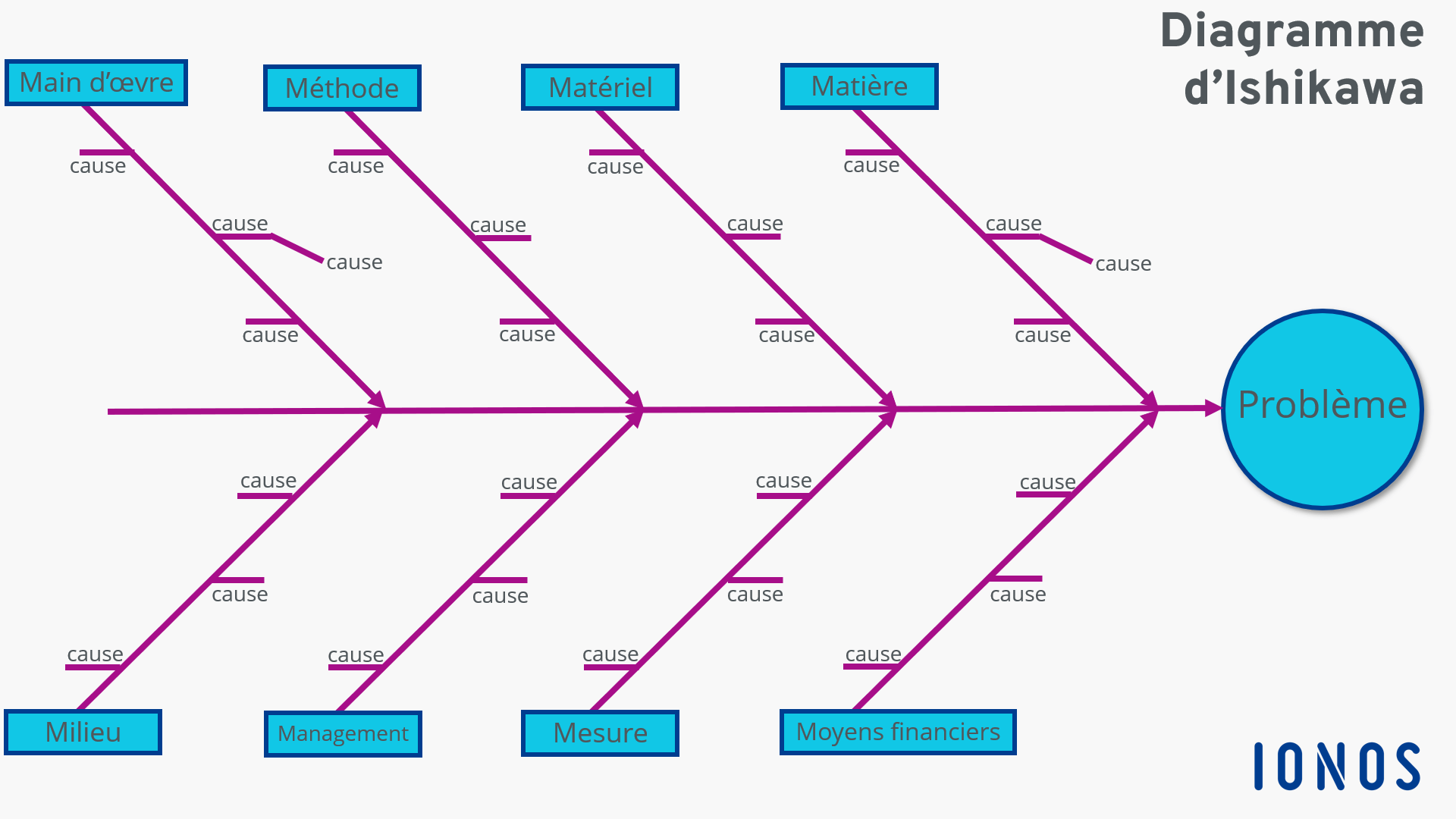
Diagramme d’Ishikawa le diagramme de causes et effets expliqué IONOS
Het visgraatdiagram (ook Ishikawa-diagram genoemd) kun je gebruiken voor je probleemanalyse. Het diagram is vooral handig wanneer je moeite hebt om de probleemstelling en doelstelling goed te definiëren. Inhoudsopgave Opbouw van het visgraatmodel Voorbeeld probleemanalyse met visgraatmodel Stappenplan brainstormsessie